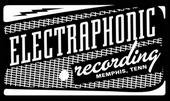Two history-making Memphis institutions are coming together as part of a new musical future.
On Thursday, Sam Phillips Recording announced it has partnered with the Stax Museum of American Soul Music to bring the original Spectra Sonics 1020 recording console, used in Stax Records' Studio B in the late 1960s and '70s, to the Phillips studio.
Scott Bomar — the Emmy-winning and Grammy-nominated producer, engineer and musician — who now manages Phillips Recording has fully restored the console, which is in use as the main board at the studio on Madison that opened in 1960.
“I can't think of any other studio where you can record in such an iconic room on such an iconic recording console,” Bomar said. “It's got a little bit of a vintage sound, but it's also modern at the same time. That’s the beauty of it. It could be from 1968, or it could be from 2068. It's just totally timeless.”
The announcement comes on the 100th anniversary of Sun Records/Phillips studio founder Sam Phillips’ birth. In a statement, the Phillips family — led by Sam Phillips’ son Jerry Phillips and his daughter Halley Phillips — which still operates the studio said the twining of two musical icons would be “good for Memphis.”
“I think it's going to be good for us. I think it's going to be good for the Stax legacy, the Phillips legacy and the Sun legacy,” Jerry Phillips said. “It’s almost like we are starting a new chapter in the recording industry [here].”
Originally used in Stax’s Studio B, located upstairs at 926 E. McLemore, the board’s components were manufactured by Spectra Sonics of Utah and put together in Memphis by Auditronics, a local company that developed various consoles for Stax and Ardent studios. The Stax Studio B console was used to record numerous artists including Isaac Hayes, Rufus Thomas, Little Milton, Albert King and the Bar-Kays, among others. Following Stax Records’ forced involuntary bankruptcy in 1976, the Spectra Sonics console was auctioned in Memphis the following year, and purchased by Barry Shankman and Leonard Lubin, who installed much of the Stax equipment at their BR Toad recording studio.
The Studio B console eventually ended up in Shreveport, Louisiana’s Sound City Recording, a funk and soul recording studio. Later renamed Southern Star Studio, the analog board remained in use there until it was mothballed as digital recording became prevalent in the 1990s.
Two decades later, in 2017, Stax Museum executive director Jeff Kollath was approached about the board. “We got a phone call out of the blue from Jimmy Johnson down at the studio in Shreveport saying he had the Stax console from Studio B and wanted to know if the museum was interested in having it back," Kollath said. After authenticating that it was the Studio B Spectra Sonics board, it was added to the Stax Museum archival collection in early 2018. Once the museum was in possession of the console, discussions — between Kollath, Bomar and Jerry Phillips — began about putting it back into use at Phillips Recording.
Finally, in the fall of 2021, an agreement was struck between the Stax Museum and Phillips. Bomar and technicians Ronnie Kittell and Matt Brown then spent the next year working almost daily to restore the Spectra Sonics console to its original condition.
“When we first powered it up, we just played some music through it and immediately I noticed the clarity of it, and was also impressed with the EQs,” Bomar said. “Overall, everything we’ve done on it so far, recording here, or mixing something through it, it just sounds like Memphis. It’s a very distinctive and familiar sound.”
Bomar has already recorded several projects on the restored board and is currently booking clients for 2023.
Stax Museum head Kollath added that the unique setup placing the console at Phillips “is something very special.”
“To have great people like Scott and Jerry working on this is an honor for the Stax Museum,” he said. “The idea that something that was so integral to Stax Records is now back in our community providing opportunity 50 years later for our artists and young people to make new music is incredibly exciting.”
